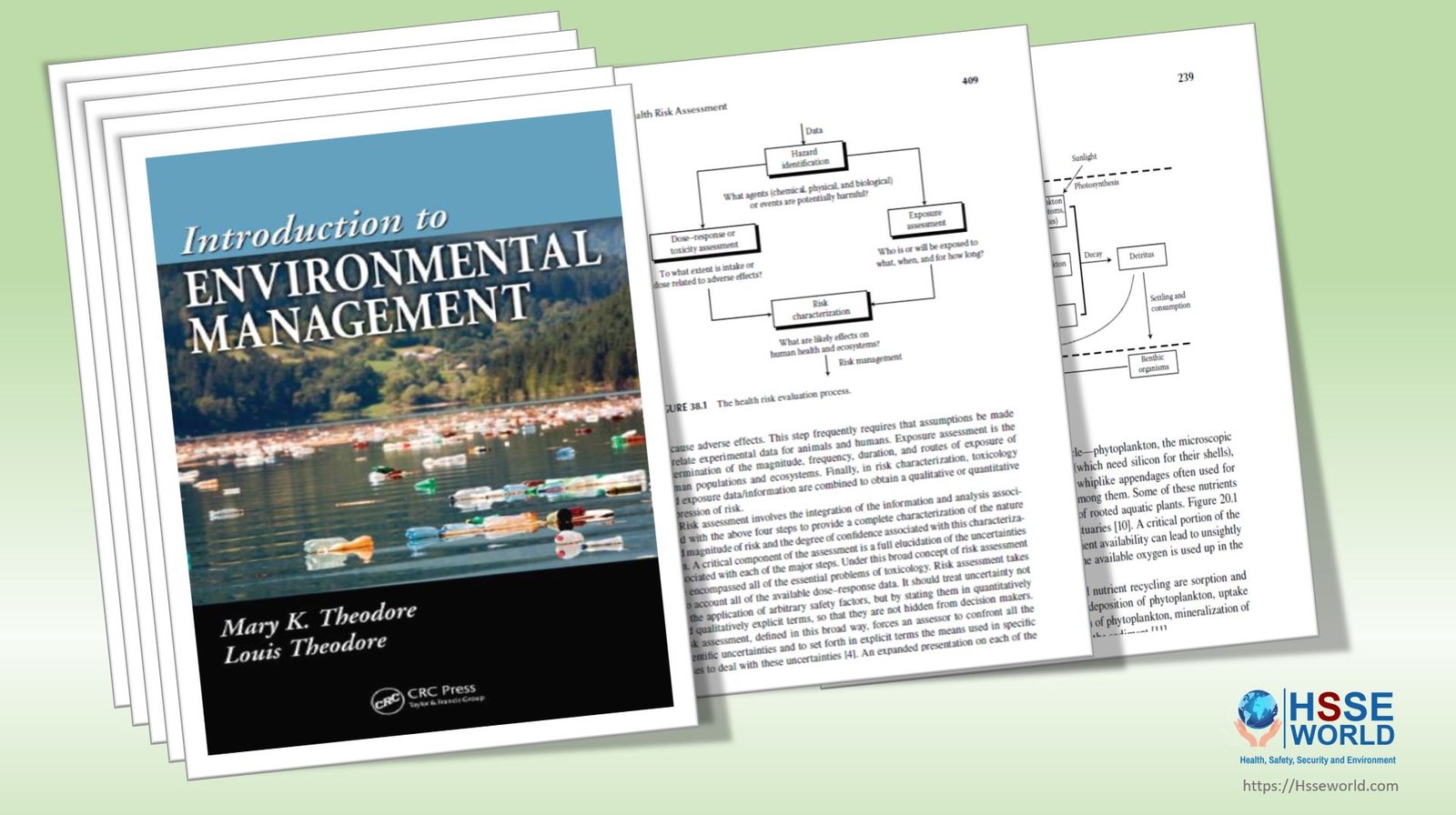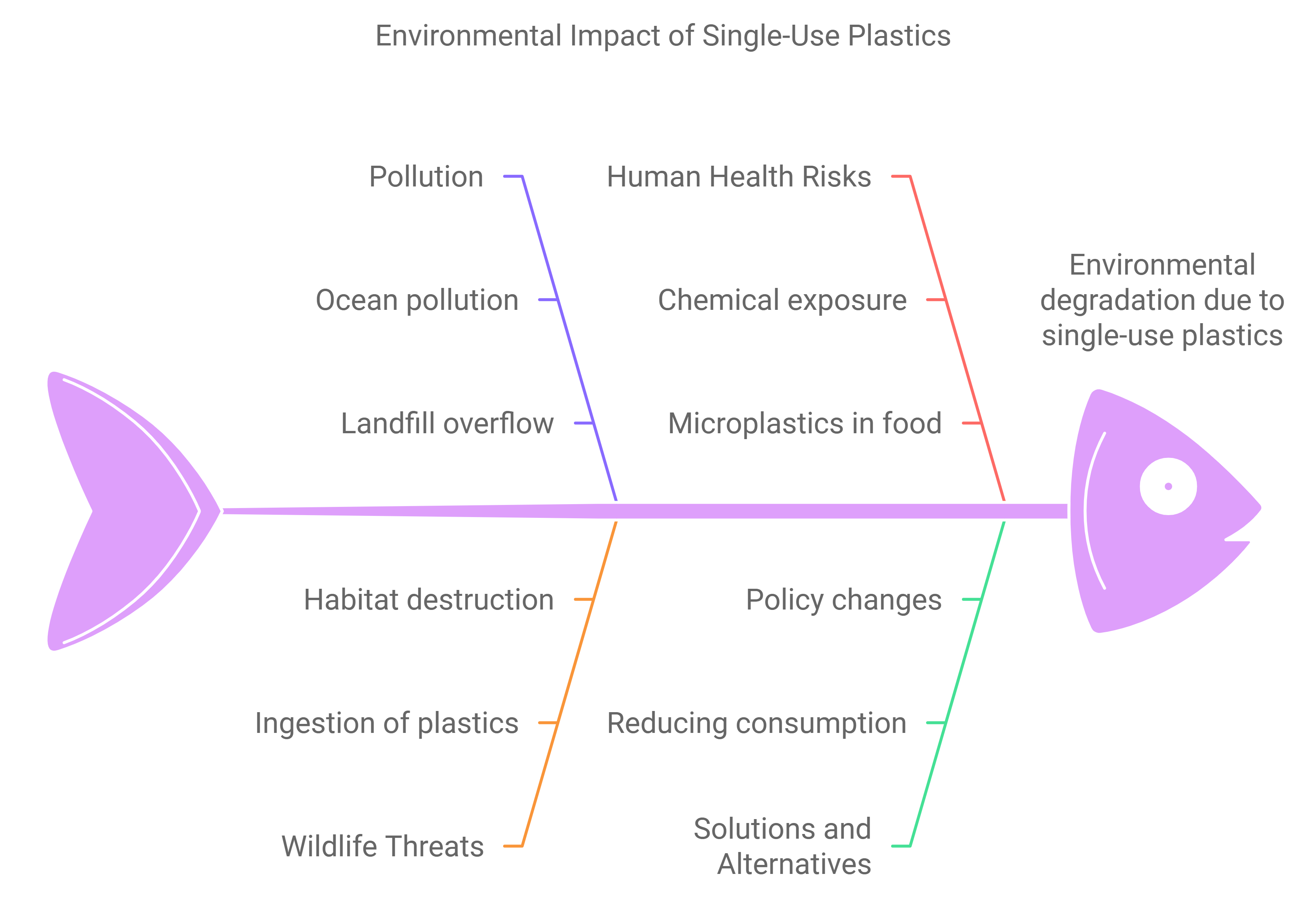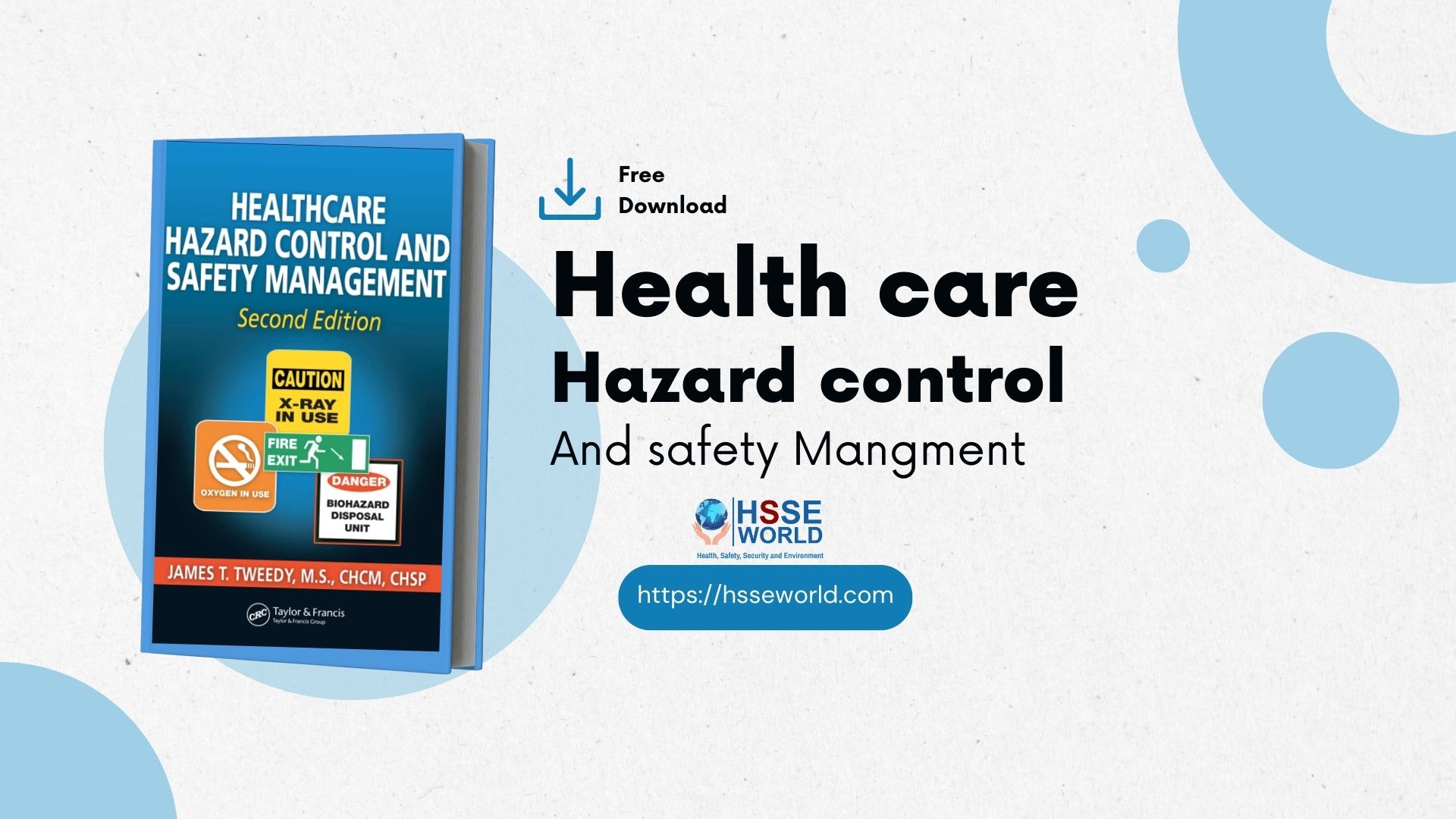E-Books:Introduction to Environmental Management

[vc_row][vc_column width=”1/2″][vc_column_text]In the last four decades, there has been an increased awareness of a wide range of environmental issues covering all sources: air, land, and water. More and more people are becoming aware of these environmental concerns, and it is important that professional people, many of whom do not possess an understanding of environmental problems, have the proper information available when involved with environmental issues. All professionals should have a basic understanding of the technical and scientific terms related to these issues as well as the regulations involved. Hopefully, this book will serve the needs of the professional by increasing his or her awareness of (and help solve) the environmental problems that society is facing now.
This book is primarily intended for individuals who have a limited environmental technical background. It is presented in simple, understandable terms for students, practicing engineers and scientists, lawyers, news media executives, business personnel, and even the consumers who need to know the fundamentals of the many environmental issues that exist and will continue to exist in the future. The authors’ objective is also to provide both background material on numerous environmental issues and information on what each individual can do to help alleviate some of these problems.
This book is divided into seven parts. Part I provides an overview that includes an introduction to environmental issues, regulations, and types of pollutants. Part II deals with issues related to air pollution. It includes material on how air pollution can be controlled, and on the quality of indoor air, which is an issue in many office buildings today. Part III discusses the problems of pollution in water and methods to control this problem. Part IV focuses on solid waste management. It examines the different types of solid waste, such as hazardous, medical, and nuclear, and treatment techniques for each. This part also includes material on the Superfund program and the result of its effort to clean up waste sites.[/vc_column_text][/vc_column][vc_column width=”1/2″ css=”.vc_custom_1543134153059{border: 4px outset #d6d6d6 !important;border-radius: 4px !important;}”][vc_single_image image=”9581″ img_size=”full” alignment=”center” css=”.vc_custom_1582792210281{margin-top: 2px !important;margin-right: 2px !important;margin-bottom: 2px !important;margin-left: 2px !important;}”][vc_text_separator title=”” i_icon_fontawesome=”fa fa-book” i_size=”lg” color=”blue” style=”shadow” border_width=”3″ add_icon=”true”][vc_btn title=”Click Here for more E-Books” style=”3d” color=”danger” align=”center” link=”url:http%3A%2F%2Fhsseworld.com%2Fdownloads%2F||target:%20_blank|” button_block=”true”][/vc_column][/vc_row][vc_row][vc_column][vc_column_text]Part V focuses on three pollution prevention topic areas, including health, safety, and accident prevention, energy conservation, and waste reduction. Since the concern with many of the environmental issues arises because of the risks involved, Part VI examines how risks are perceived and communicated, and how individuals can be educated about these risks. Part VII provides information on other areas of interest in the environmental arena. These include many popular topics like electromagnetic fields, environmental implications of nanotechnology, and ethical issues as they relate to the environment.
INTRODUCTION
In the past four decades there had been an increased awareness of a wide range of environmental issues covering all sources: air, land, and water. More and more people
are becoming aware of these environmental concerns, and it is important that professional people, many of whom do not possess an understanding of environmental problems or have the proper information available when involved with environmental issues. All professionals should have a basic understanding of the technical and scientific terms related to these issues as well as the regulations involved. Hopefully this book will serve the needs of the professional by increasing his or her awareness
of (and help solve) the environmental problems facing society.
The past four decades have been fi lled with environmental tragedies as well as a heightened environmental awareness. The oil spills of the Exxon Valdez in 1989 and in the Gulf War of 1991 showed how delicate our oceans and their ecosystems truly are. The disclosures of Love Canal in 1978 and Times Beach in 1979 made the entire nation aware of the dangers of hazardous chemical wastes. The discovery of acquired immunodefi ciency syndrome (AIDS) virus and the beach washups of 1985 brought the issue of medical waste disposal to the forefront of public consciousness. A nuclear accident placed the spotlight on Chernobyl, and to this day society is still seeing the effects of that event. An outline of the contents of the book follows. Details on each of the chapters of the seven Parts is included in the presentation.[/vc_column_text][vc_single_image image=”9580″ img_size=”full” alignment=”center” css=”.vc_custom_1582792373083{margin-top: 2px !important;margin-right: 2px !important;margin-bottom: 2px !important;margin-left: 2px !important;}”][/vc_column][/vc_row][vc_row css=”.vc_custom_1569482550358{border-top-width: 4px !important;border-bottom-width: 4px !important;border-top-color: #e5e5e5 !important;border-top-style: solid !important;border-bottom-color: #e5e5e5 !important;border-bottom-style: solid !important;}”][vc_column][vc_column_text]PART I
The “Overview” provides a general background and addresses international concerns, environmental regulations, and generators of pollutants. Degradation of the environment is not a problem that is restricted to the United States, or even to developed countries. On the contrary, underdeveloped countries are struggling with several environmental issues that have already been resolved in many developed countries. In the United States, the Environmental Protection Agency (EPA) as well as the individual states is working hard to implement regulations addressing areas of environmental concern. Generators and sources of pollutants are being identifi ed so that solutions may be targeted to specifi c areas. The Part concludes with chapters that deal with the chemistry of green engineering.
PART II
“Air” management issues looks into several different areas related to air pollutants and their control. Atmospheric dispersion of pollutants can be mathematically modeled to predict where pollutants emitted from a particular source, such as a combustion facility stack, will settle to the ground and at what concentration. Pollution control equipment can be added to various sources to reduce the amount of pollutants before they are emitted into the air. Acid rain, the greenhouse effect, and global warming are all indicators of adverse effects to the air, land, and sea which result from excessive amount of pollutants being released into the air. One topic that few
people are aware of is the issue of indoor air quality. Inadequate ventilation systems in homes and businesses directly affect the quality of health of the people within the buildings. For example, the episode of Legionnaires’ disease, which occurred in Philadelphia in the 1970s, was related to microorganisms that grew in the cooling water of the air-conditioning system. Noise pollution, although not traditionally an air pollution topic, is included in this section. The effects of noise pollution are generally not noticed until hearing is impaired. And although impairment of hearing is a commonly known result of noise pollution, few people realize that stress is also a significant result of excessive noise exposure. The human body enacts its innate physiologic defensive mechanisms under conditions of loud noise, and the fight to control these physical instincts causes tremendous stress on the individual.
PART III
Pollutant dispersion in water systems and wastewater treatment is discussed in “Water” management issues. Pollutants entering rivers, lakes, and oceans come from a wide variety of sources, including stormwater runoff, industrial discharges, and accidental spills. It is important to understand how these substances disperse in order to determine how to control them. Municipal and industrial wastewater treatment systems are designed to reduce or eliminate problem substances before they are introduced into natural water systems, industrial use systems, drinking water supply, and other water systems. Often, wastewater from industrial plants must be pretreated before it can be discharged into a municipal treatment system.
PART IV
“Solid Waste” management issues addresses treatment and disposal methods for municipal, medical, and radioactive wastes. Programs to reduce and dispose of municipal waste include reuse, reduction, recycling, and composting, in addition to incineration and landfi lling. Potentially infectious waste generated in medical facilities must be specially packaged, handed, stored, transported, treated, and disposed of to ensure the safety of both the waste handlers and the general public. Radioactive
waste may have serious impacts on human health and the environment, and treatment and disposal requirements for radioactive substances must be strictly adhered to. Incineration has been a typical treatment method for hazardous waste for many years. Superfund was enacted to identify and remedy uncontrolled hazardous waste sites. It also attempts to place the burden of cleanup on the generator rather than on the federal government. Asbestos, metals, and underground storage tanks either contain or inherently are hazardous materials that require special handling and disposal. Further, it is important to realize that both small and large generators of hazardous wastes are regulated.
PART V
“Pollution Prevention” covers domestic and (primarily) industrial means of reducing pollution. This can be accomplished through (a) proper residential and commercial building design; (b) proper heating, cooling, and ventilation systems; (c) energy conservation; (d) reduction of water consumption; and (e) attempts to reuse or reduce materials before they become wastes. Domestic and industrial solutions to environmental problems arise by considering ways to make homes and workplaces more
energy-effi cient as well as ways to reduce the amount of wastes generated within them.
PART VI
Managers also need to be informed on how to make decisions about associated risks and how to communicate these risks and their effects on the environment to the public. “Environmental Risk” topics include short-term and long-term threats to human health and the environment. Risk assessment is the most important consideration for remediation of harmful effects stemming from the presence of a hazardous substance, and risk-based decision-making is a tool that is now routinely being used to select a cleanup alternative. This Part also provides an explanation of both how to estimate and how to avoid environmental, health, and hazard risks.
PART VII
The last part, “Other Areas of Interest,” discusses nine topics that are relatively new in the area of environmental management. Included in Part VII are electromagnetic fields, noise pollution, used oil, and the environment implications of nanotechnologies.Environmental audits provide a means of assessing the environmental conduct and performance of an organization. Environmental ethics, as it relates to rules of proper environmental conduct, receives treatment in the next to the last chapter.
Finally,environmental justice (last chapter) is a new term for describing the disproportionate distribution of environmental risks in minority and low-income communities. Federal attention is now focused on environmental and human health conditions in these areas, with the goal of achieving equality of environmental protection for all communities.
This book is not intended to be all-encompassing. Rather, it is to be used as a starting point. References are provided at the end of each chapter, which provide more detailed information on each topic.[/vc_column_text][/vc_column][/vc_row][vc_row][vc_column][vc_btn title=”Download The Book” color=”pink” align=”center” i_icon_fontawesome=”fa fa-cloud-download” link=”url:http%3A%2F%2Fhsseworld.com%2Fwp-content%2Fuploads%2F2020%2F02%2FIntroduction-to-Environmental-Management_compressed.pdf||target:%20_blank|” add_icon=”true” button_block=”true”][/vc_column][/vc_row][vc_row][vc_column][vc_column_text]
[/vc_column_text][/vc_column][/vc_row]















